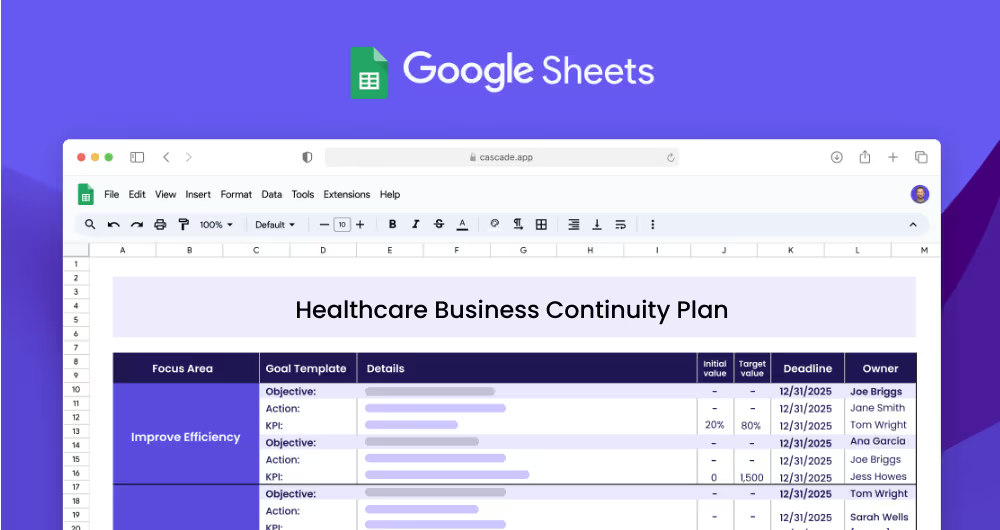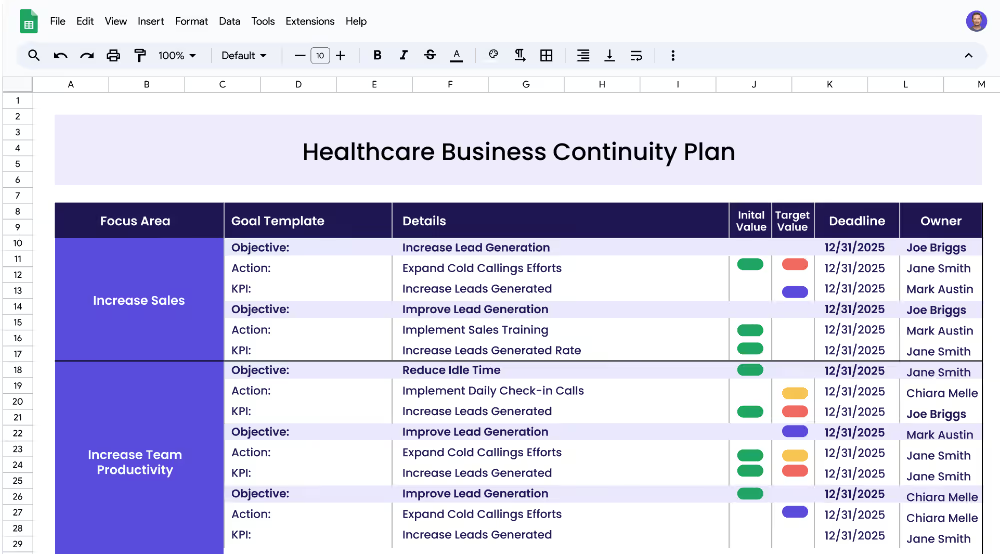A healthcare business continuity plan outlines the steps needed to ensure that patient care, healthcare services, and medical operations are continued during times of emergency or unforeseen circumstances. This plan includes strategies to address potential risks, as well as strategies to maintain critical operations such as communication systems, medical equipment maintenance, and patient triage protocols. This plan is important for healthcare organizations, hospitals, and medical facilities to be prepared for any potential disruption.
Each focus area has its own objectives, projects, and KPIs to ensure that the strategy is comprehensive and effective.
This template is for healthcare organizations, hospitals, and medical facilities who are looking for an organized and comprehensive way to develop their business continuity plans. The template is designed to help healthcare organizations define their focus areas, objectives, projects, and measurable targets (KPIs) to ensure continuity of patient care, healthcare services, and medical operations during unexpected events.
A focus area is a broad topic or field that you want to address when developing your business continuity plan. Examples of focus areas you may want to consider include ensuring continuity of patient care, continuity of healthcare services, and continuity of medical operations. By defining specific focus areas, you can isolate the objectives, projects, and KPIs that need to be implemented to ensure the continuity of each area.
An objective is a goal that you want to achieve under a specific focus area. For example, if your focus area is ensuring continuity of patient care, your objectives could include establishing emergency response/restoration teams, improving communication systems, and other related actions. Objectives should be specific and achievable within a reasonable timeframe.
A KPI, or key performance indicator, is a measurable target that will help you track the progress of your objectives. KPIs should be outlined in the form of a measure, initial value, target value, and unit. For example, “Decrease patient triage time from 5 minutes to 1 minute” is a KPI that includes a measure (decrease patient triage time), initial value (5 minutes), target value (1 minute), and unit (minutes).
A project, or action, is an initiative that you will take to achieve your KPIs. For example, if your KPI is to “Decrease patient triage time from 5 minutes to 1 minute”, your project may be to create patient triage protocols. By implementing related projects to achieve your KPIs, you can ensure that you take the necessary steps to reach your objectives.
If you're looking to accelerate your strategies and achieve broader goals swiftly, Cascade Strategy Execution Software could be the game changer you need. Cascade outperforms spreadsheets by offering real-time updates, centralized collaboration, and automated reporting. This enables robust, scalable strategy management that helps teams adapt rapidly and maintain alignment seamlessly. Say goodbye to the limitations of traditional methods and embrace a comprehensive, integrated approach with Cascade. To start transforming your strategic processes, sign-up for free or book a demo with one of our strategy experts today.


